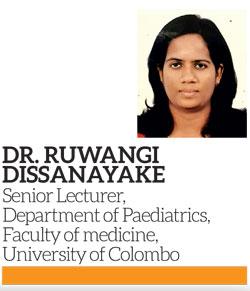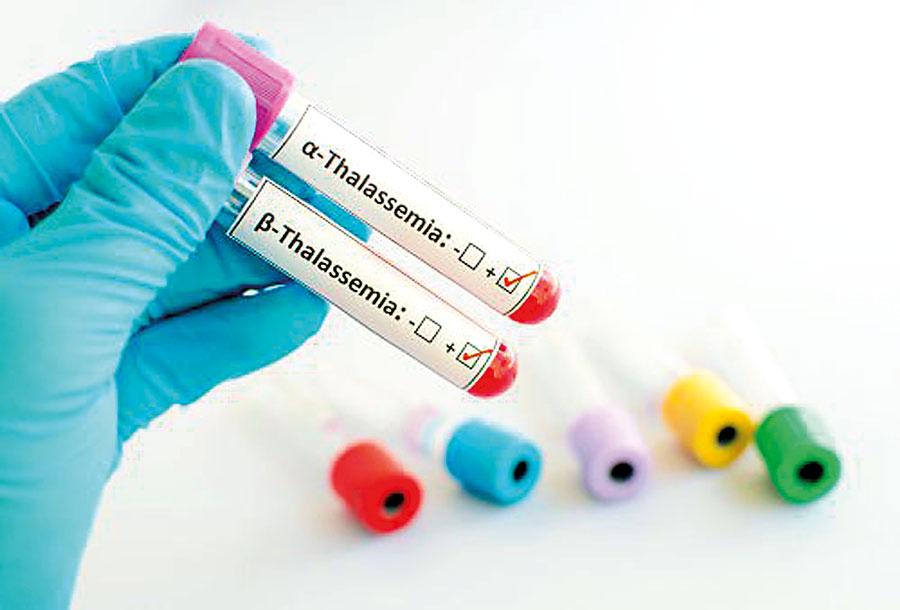10 May 2019 - {{hitsCtrl.values.hits}}

 The term ‘cure’ brings solace to the mind when it is associated with medical complications. However there are diseases that are in existence with no known cure with the only option available to the patient being to continue living with the condition. Thalassemia is one such medical malady where the patient has to continue with lifelong treatment. With the aim of providing an eye-opener to the general public regarding the condition and honouring World Thalassemia Day, which falls on 8 May, the Health Capsule spoke to Dr. Ruwangi Dissanayake, Senior Lecturer, Department of Paediatrics, Faculty of medicine, University of Colombo on the thalassemia threat.
The term ‘cure’ brings solace to the mind when it is associated with medical complications. However there are diseases that are in existence with no known cure with the only option available to the patient being to continue living with the condition. Thalassemia is one such medical malady where the patient has to continue with lifelong treatment. With the aim of providing an eye-opener to the general public regarding the condition and honouring World Thalassemia Day, which falls on 8 May, the Health Capsule spoke to Dr. Ruwangi Dissanayake, Senior Lecturer, Department of Paediatrics, Faculty of medicine, University of Colombo on the thalassemia threat.
A close look at the disease
Dr. Dissanayake explained that thalassemia is a hereditary condition where the patient suffers from low haemoglobin levels in the blood. Haemoglobin is a protein pigment found within the red blood cells. It is responsible in the transportation of oxygen to all parts of the body. “Low levels of haemoglobin and thereby inadequate oxygen supply to the cells of the body can of course lead to other complications and the condition can be serious if treatment is not sought immediately. Haemoglobin is caused due to the presence of two mutated or faulty genes that are responsible for the production of the protein, haemoglobin,” she stated. The presence of one faulty gene and a healthy gene would result in the person becoming a carrier of the disease. However the person is not affected adversely. Carriers do not suffer from symptoms and is able to lead a healthy life.
The complication arises when the person inherits the genes which are both faulty. This will result in the person from directly becoming a thalassemia patient.
symptoms would start appearing during early childhood; as early as 6 months of age. Due to low haemoglobin levels and thereby inadequate supply of blood, the patient becomes anaemic

Seeking medical attention
Since the complication is hereditary, and the person remains diseased from birth, Dr. Ruwangi mentioned that symptoms would start appearing during early childhood; as early as 6 months of age. Due to low haemoglobin levels and thereby inadequate supply of blood, the patient becomes anaemic. “Poor feeding, poor weight gain, lethargy are some definite signs that warn parents to direct their child for medical attention. Organs such as the liver and the spleen are affected consequently. This causes the patient to appear pale. The abdomen gets distended. If the patient has a family history of thalassemia, medical attention has to be sought as soon as some of the symptoms are observed,” she advised.
According to Dr. Dissanayake, the thalassemia condition is affirmed through a high performance liquid chromatography (HPLC) test which is the main diagnostic method for thalassemia. By basic tests such as the full blood count abnormalities of the haemoglobin content may raise suspicion and prompt the high performance liquid chromatography test to affirm the diagnosis.
There is a lifelong dependency for blood once inflicted with thalassemia. The patient requires lifelong blood transfusions.
Consequences and complications
The patient should obtain a blood transfusion once a month. However, there is a complication that would arise by the time of the tenth transfusion. “The body gets overloaded with excess iron which could be dangerous. The retention of excess iron leads to complications of the endocrine system and organ damage,” she warned. In order to prevent this impediment, Dr. Dissanayake elaborated that a form of therapy known as chelation therapy is performed where the excess iron in the body is removed. “There are drugs that remove the excess iron. Of course this highlights the importance of careful monitoring of the patient. Under proper monitoring and medication, the patient is able to lead a normal lifespan without an issue,” she affirmed.
A more permanent method of treatment is the bone marrow transplantation. However this is a treatment that is available at a cost. “Blood cells are produced in the bone marrow. This form of treatment infuses healthy blood stem cells from a donor (preferably a sibling) to replace the damaged bone marrow cells, so that a healthy production of blood cells can be induced with a healthy level of haemoglobin. This method of treatment has a success of 80-90%. Younger the better to get this treatment and it is advised to obtain the transplantation at an age below 14 as it may give rise to complications with age,” the doctor accentuated.
As thalassemia is a congenital disease and the best way to deal with it is the reduction in the occurrence of it through prevention

Prevention the way to go
As thalassemia is a congenital disease and the best way to deal with it is the reduction in the occurrence of it through prevention. “Determination of thalassemia carrier genes in people can be determined, so that two carriers can be advised not to get married and have children as there would be a 25% probability for giving birth to a child suffering from thalassemia. In this matter prevention is the best cure,” informed Dr. Dissanayake.
However, suffering from thalassemia is not the end of the world. Compliance to routine blood transfusions with proper maintenance of the body iron levels would enable the patient to lead nothing short of a normal lifestyle.
22 Dec 2024 54 minute ago
22 Dec 2024 2 hours ago
22 Dec 2024 3 hours ago
22 Dec 2024 5 hours ago
22 Dec 2024 5 hours ago